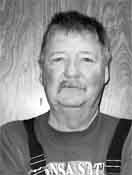 | Dr. William Morland graduated from Kansas State University in 1970 with a doctorate in veterinary medicine. He and his wife, Dr. Laura Morland, founded the hospital in 1974. Dr. Morland is a large-animal practitioner. He also owns the Flying M Ranch. He enjoys working with his own cattle and back grounding calves. His pets other than his cattle include two Cairn terrier named Bandit and Dandy. |
Veterinary
2010-12-01 14:26:00
Winter tips for cattle care
Answer: Cattle need care during cold or wet weather to make sure they stay healthy and perform well. A well managed program to prepare cattle for winter and minimize cold stress can save money and reduce the number of sick animals.
Body condition should be assessed as a cow goes into winter, she should be fed to maintain or regain moderate to good condition. Thin cows suffer more from cold stress. In an effort to keep warm, they burn more of their stored body fat.
Calves may be born weak, cows may not produce adequate colostrums, and calf survivability is lowered, as is the cow’s ability to breed back on time. To help cows maintain healthy body conditions, vaccinations should be kept up to date. Parasite populations should be controlled, windbreaks and bedding should be provided during the worst of winter’s storms.
How much feed or supplement a cow needs depends on weather, body condition, available pasture, age of the cow, whether they are still nursing calves, dry, or ready to calve again soon, or fall calved and need extra nutrition to milk well and breed back again.
Young cows need extra nutrition for growth as well as reproduction, especially pregnant yearlings and two year olds that have just weaned their first calf. The two-year-old cow is at the most difficult age, (growing, milking and putting energy into the developing fetus of her second calf).
By contrast, mature cows, especially if they enter winter in good body condition, can get by on plainer feed, available in fall pasture or crop residue until they get close to calving again. Older cows may need to winter separately or with the younger ones, if they are thin. It is also important to supplement with salt and minerals, especially in the last two months of gestation and the first three months after calving.
If weather is cold and windy, cows need extra feed just to keep warm. This means they need to eat more roughage in cold weather as the fermentation and breakdown of cellulose creates heat energy. During severely cold weather, cattle also need bedding to insulate them from the frozen ground, which will help conserve their body heat.
It is most important to closely monitor the conditions of your cattle in the winter months to insure a healthy cow and calf pair once spring arrives.


